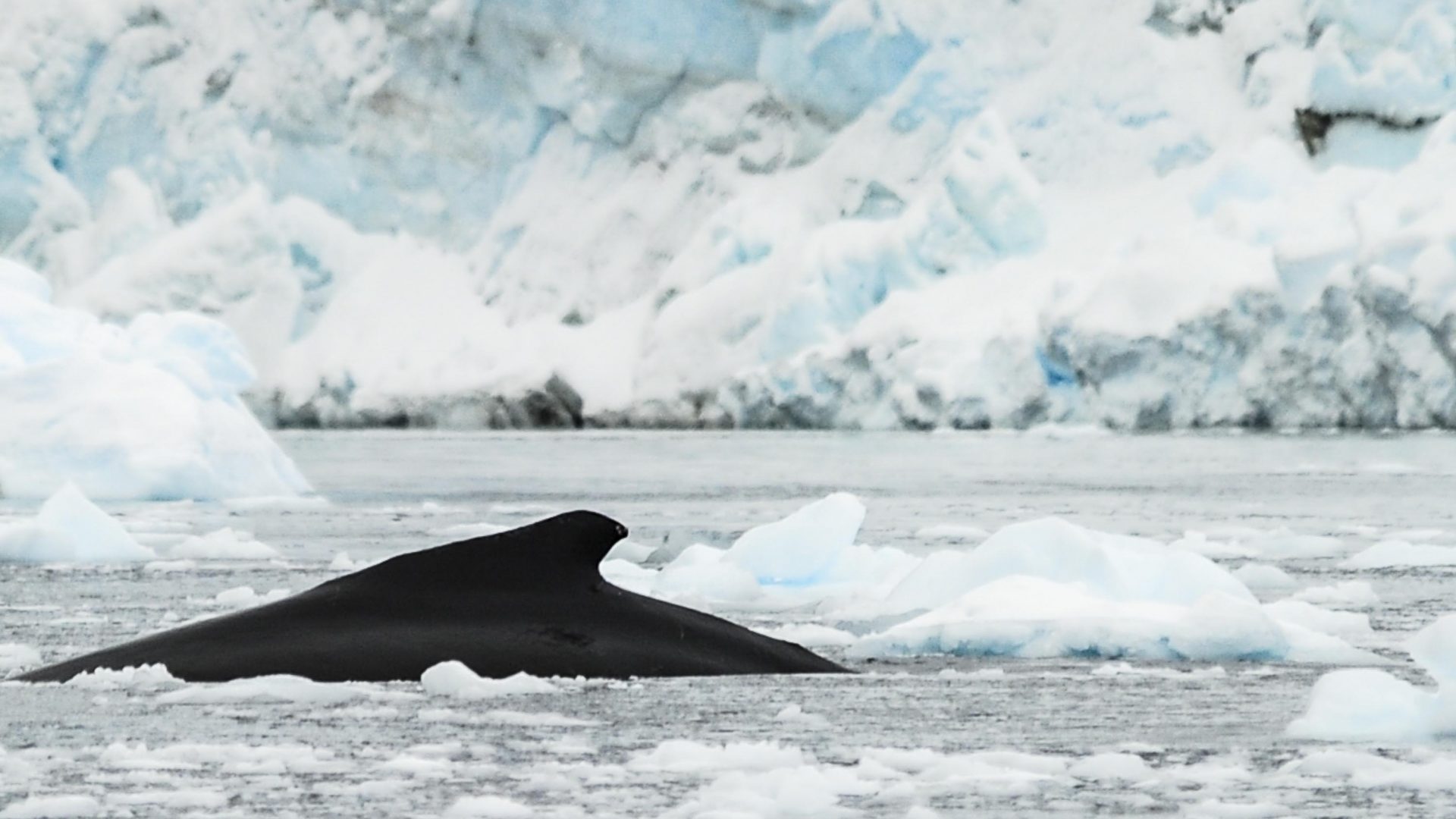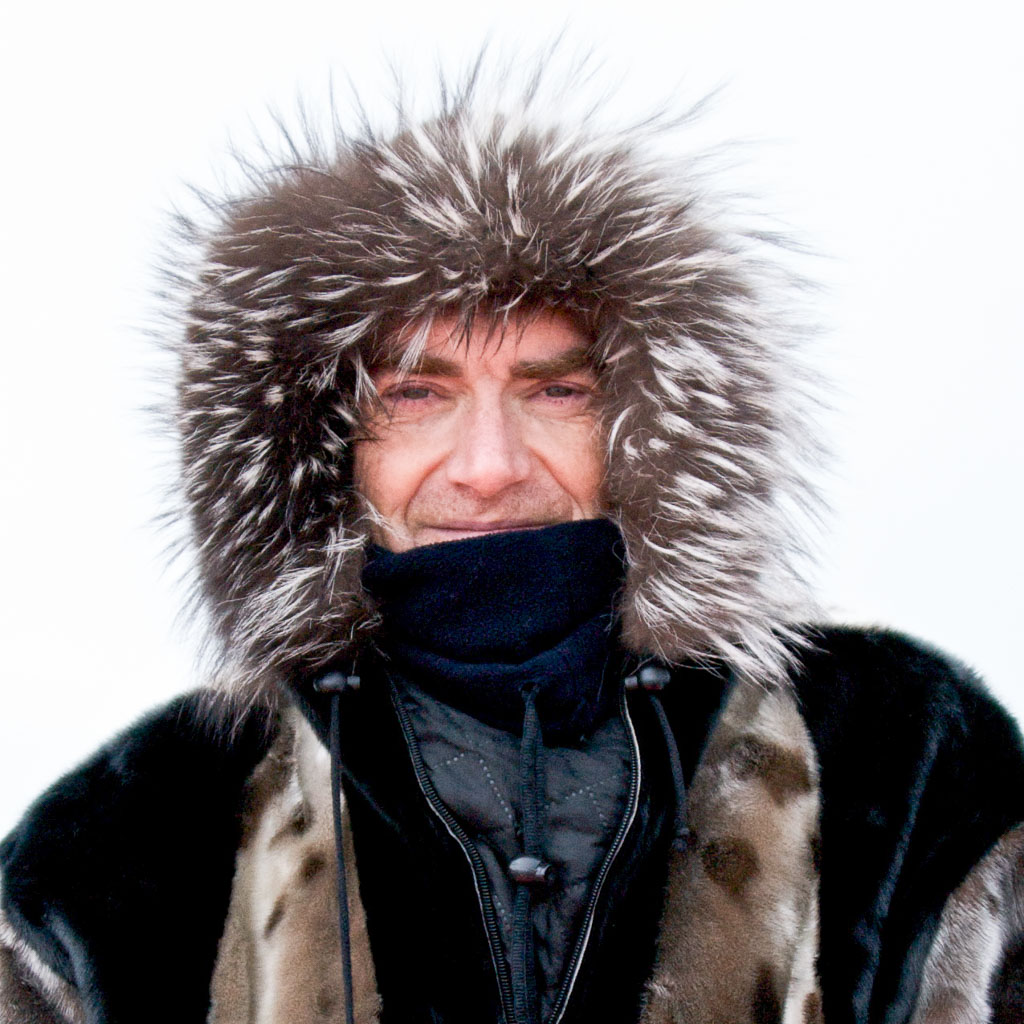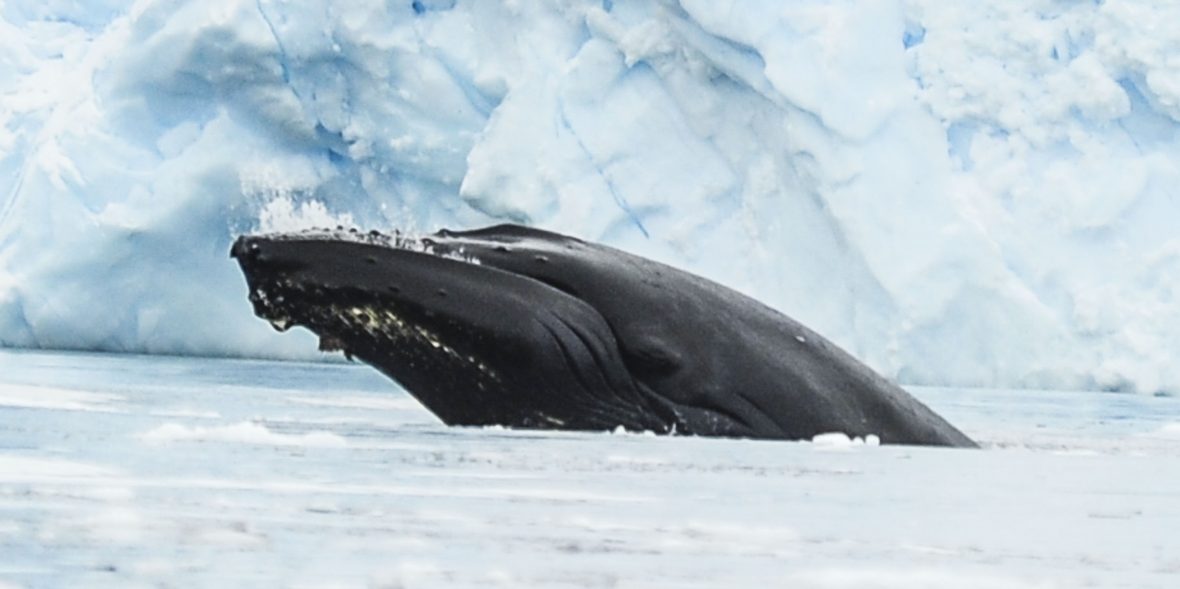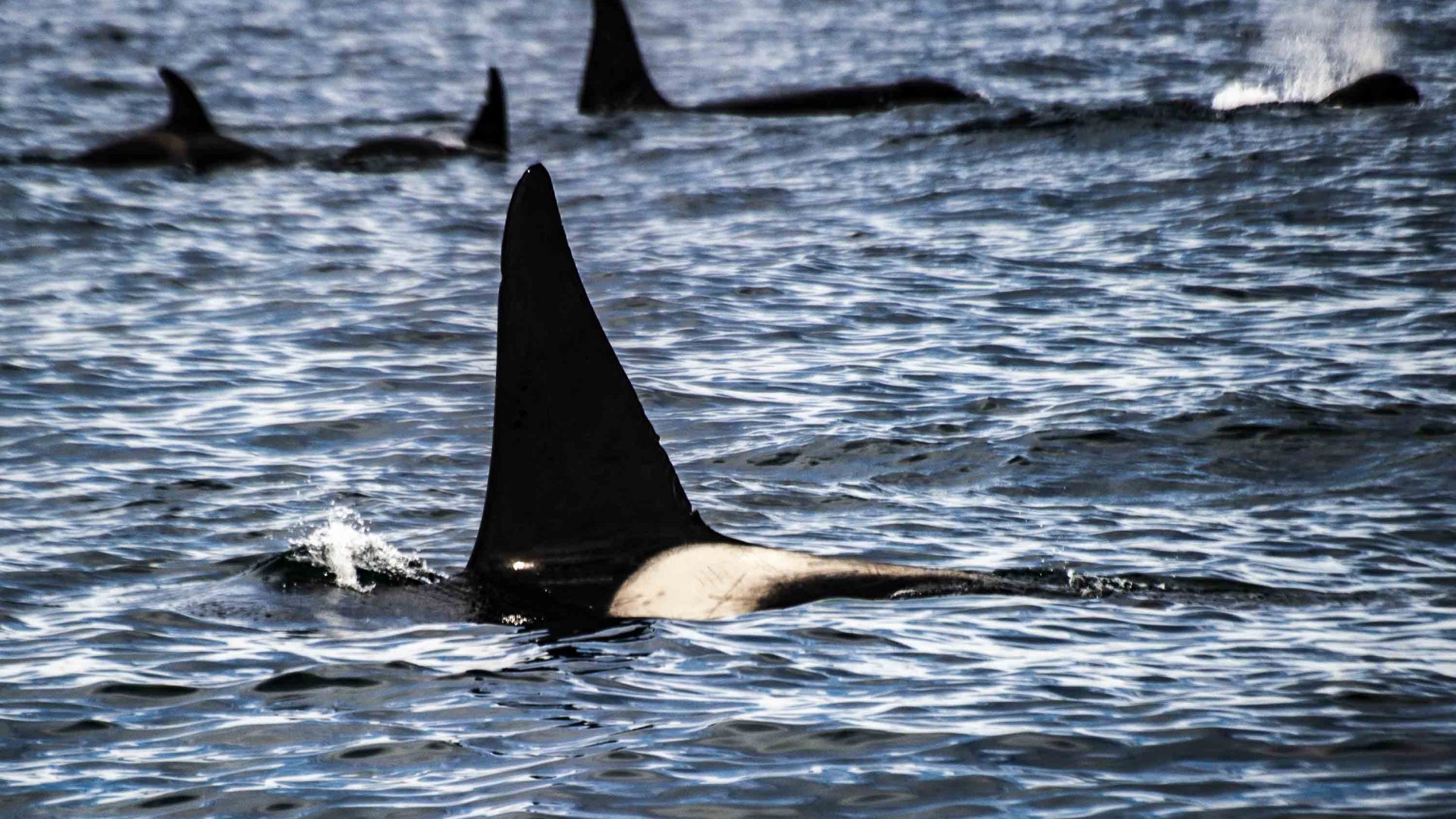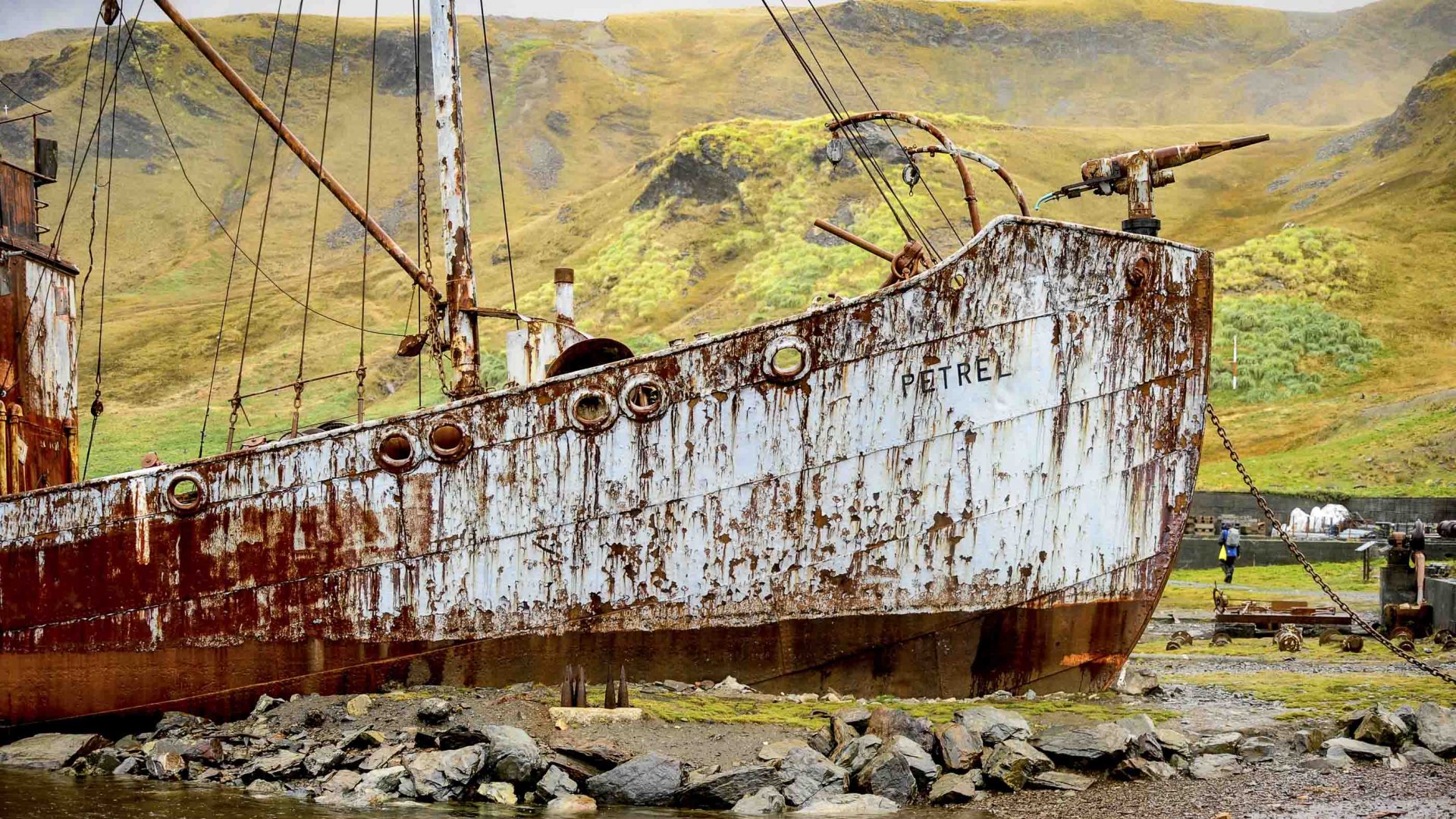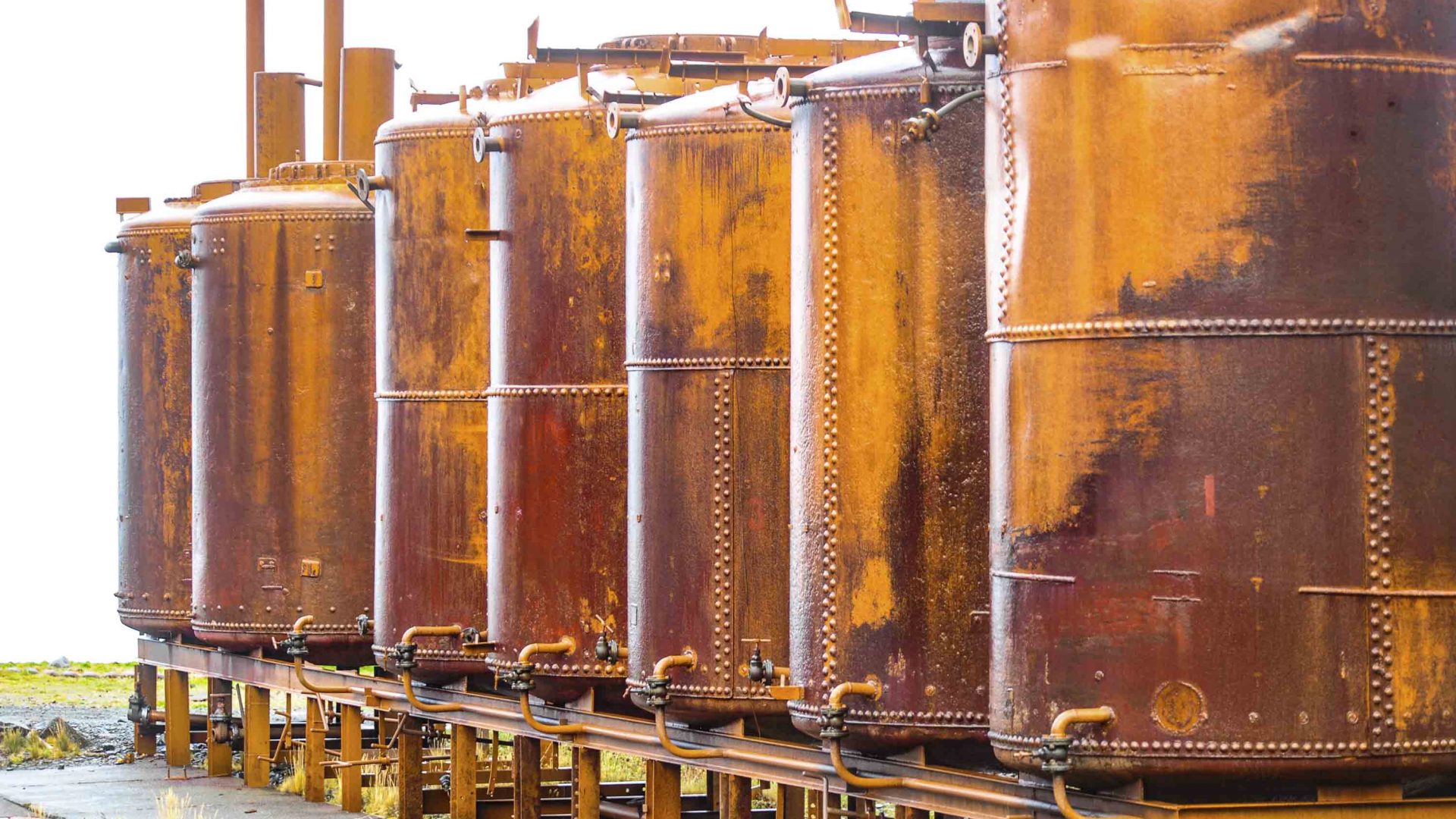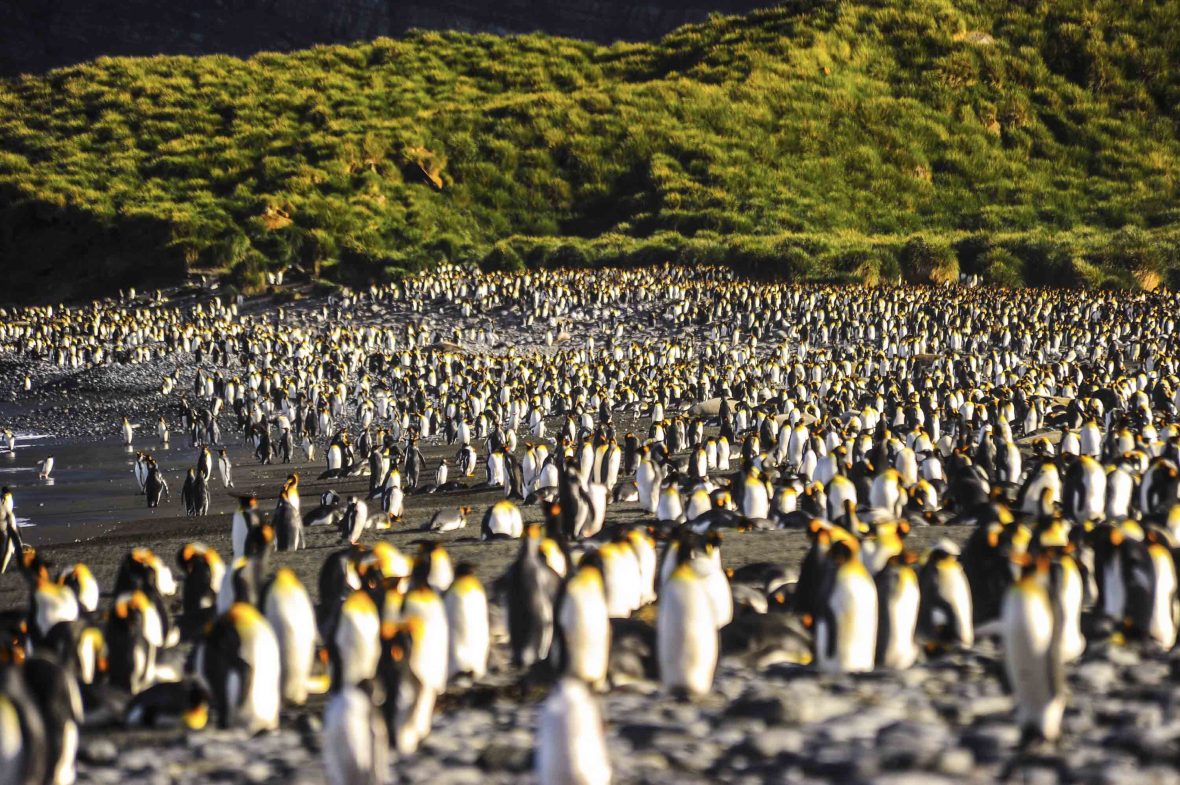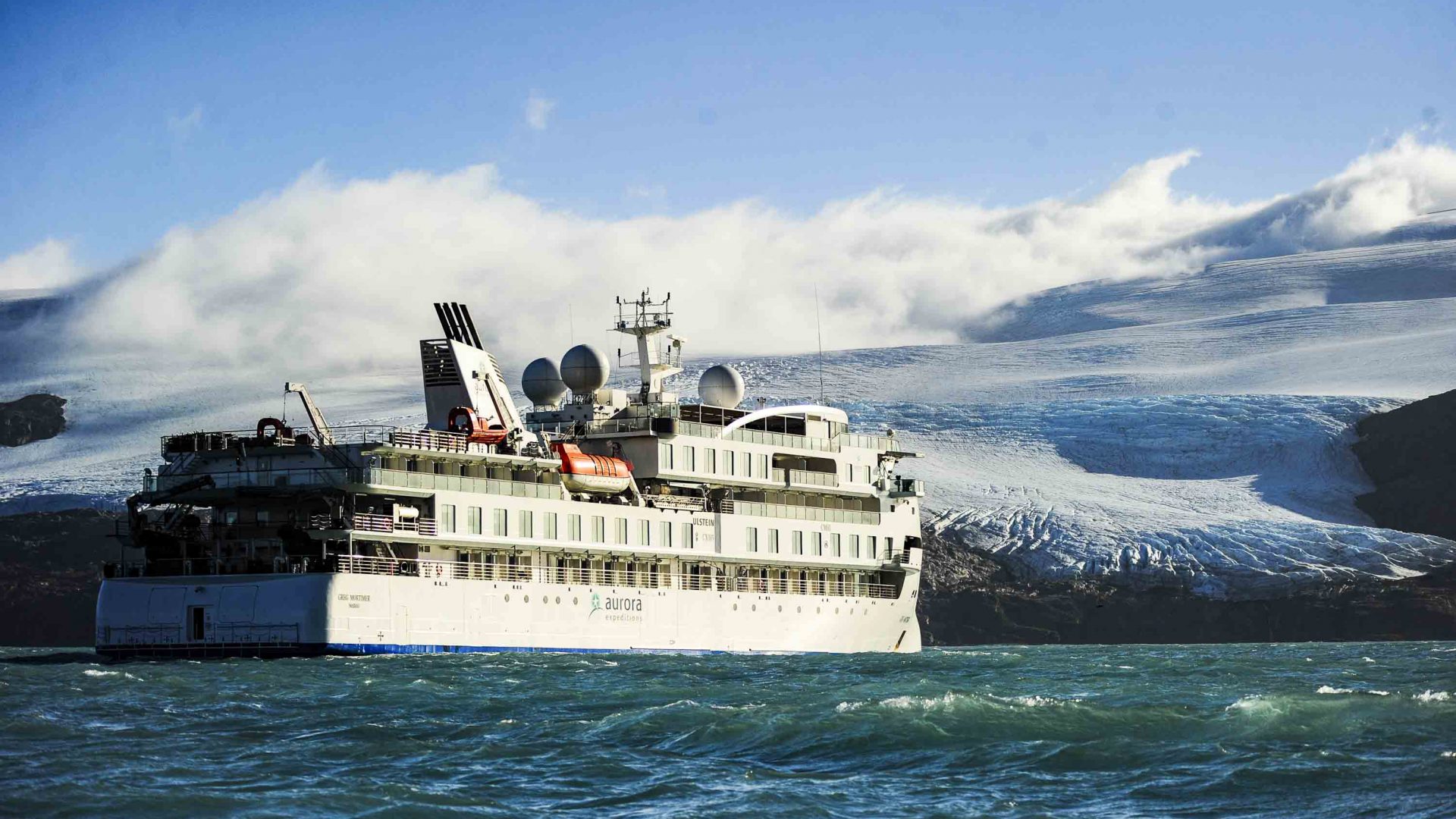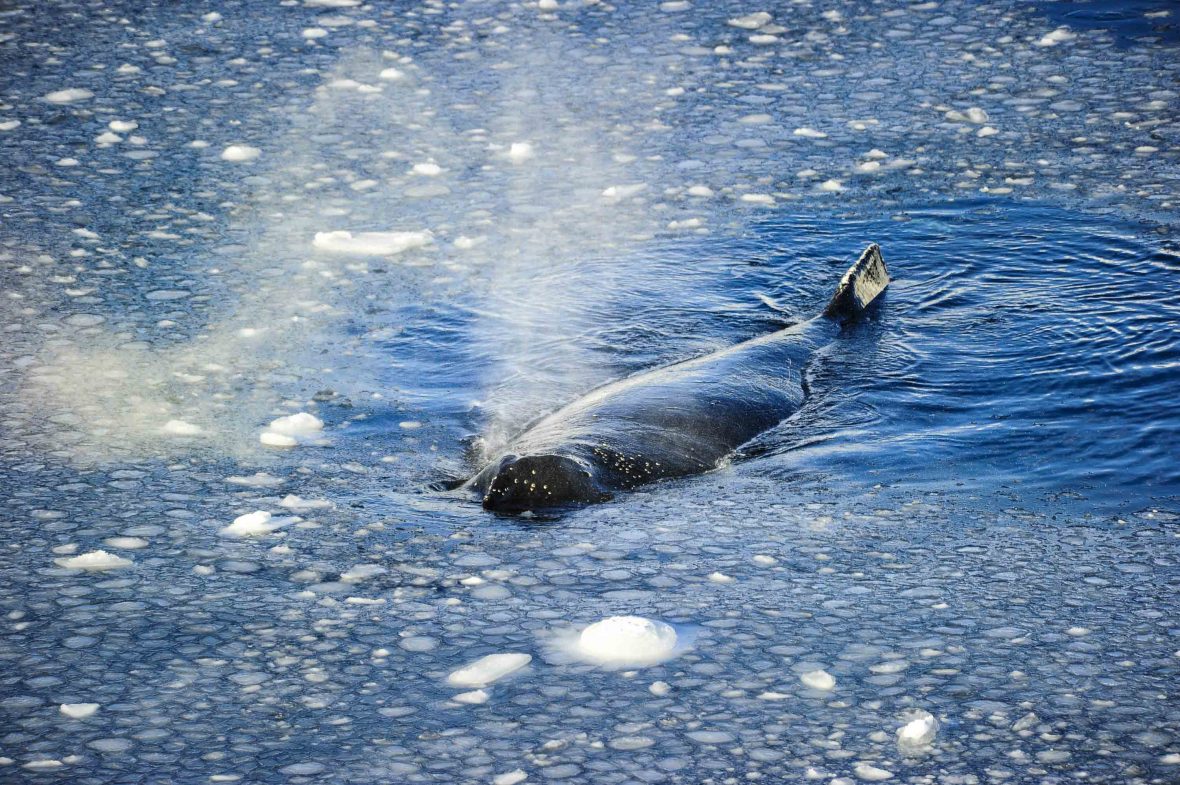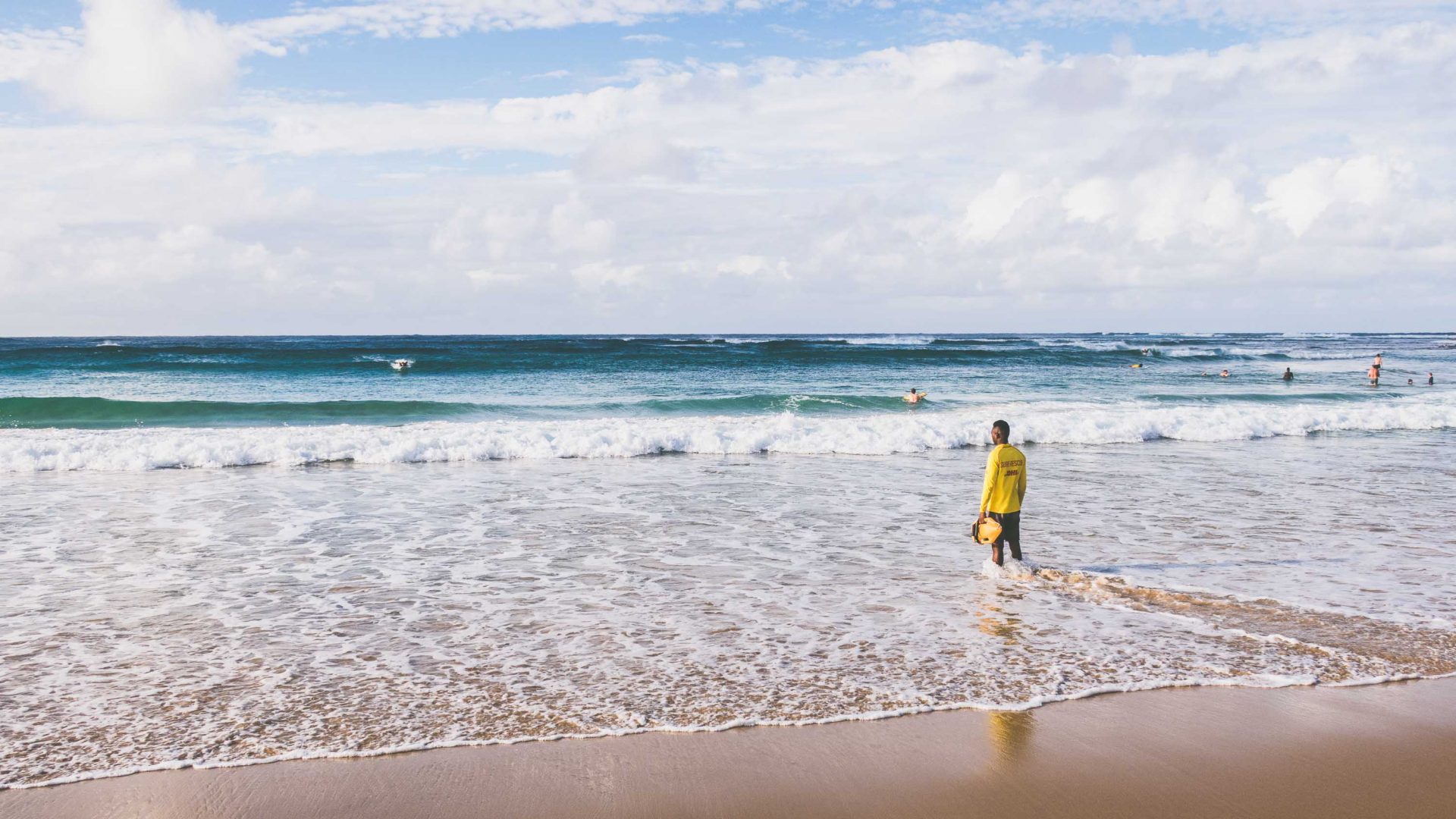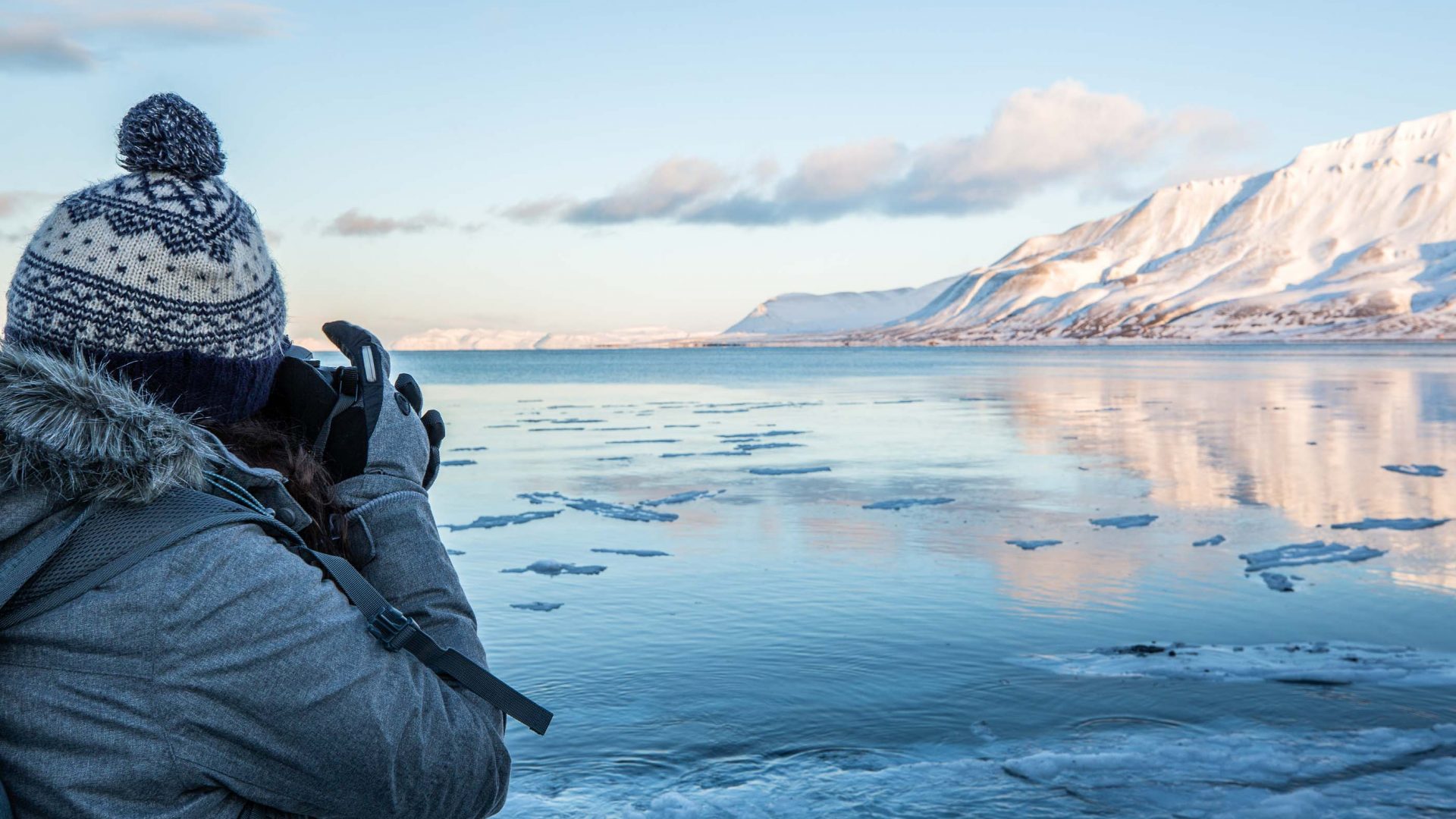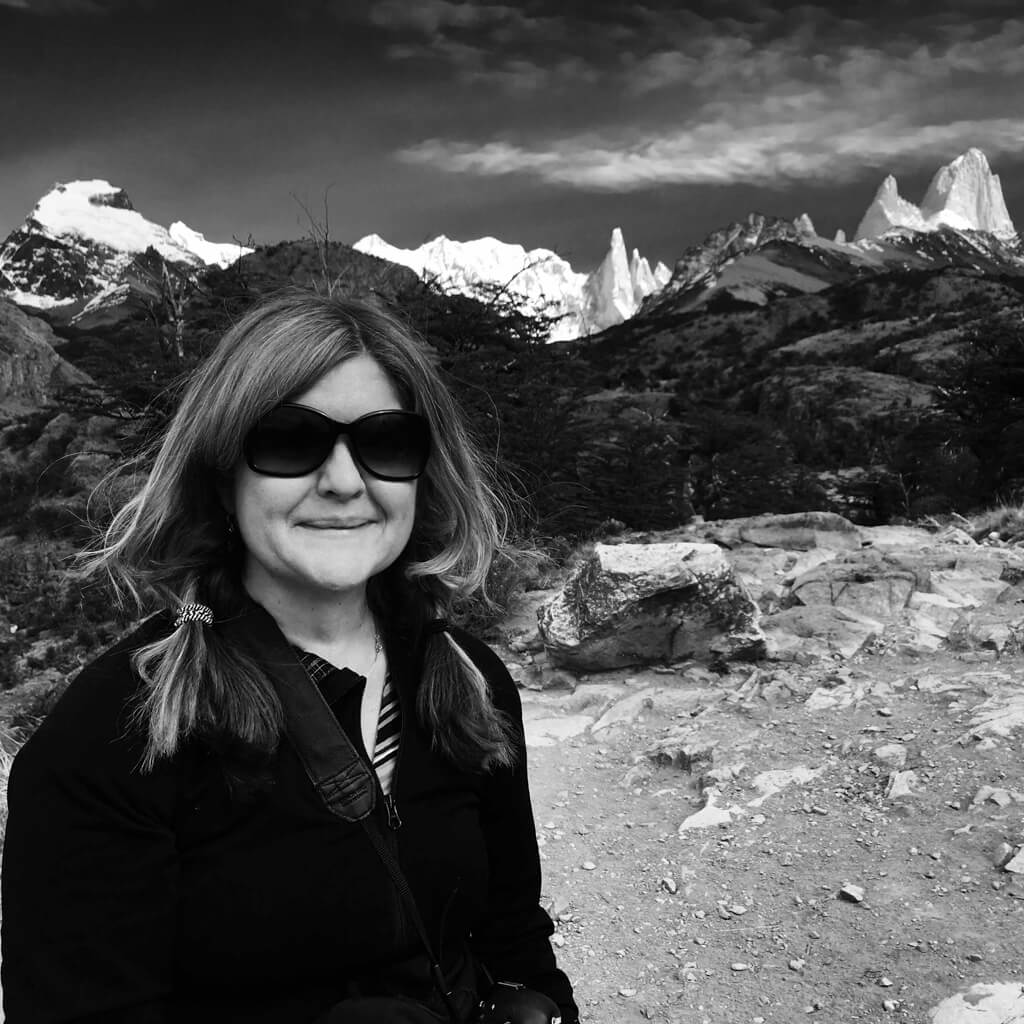Scientists know that whales can absorb huge amounts of CO2. That carbon is then stored in the ocean floor when they die. So why aren’t we better protecting the ocean habitats they need in our own attempts to find effective, long-lasting solutions for the climate crisis?
Some of my best days at sea have involved watching whales. I’ve been surrounded by orca on an Icelandic boat, and in Alaska, I witnessed a coordinated hunt on krill when four humpback whales soared above the ocean like Poseidon’s enforcers, their gaping mouths sloshing with their miniscule prey. One time, in the Sea of Cortez (Gulf of California), my kayak rolled when a humongous fin whale surfaced nearby.
For three days recently, crossing the Scotia Sea from Antarctica to South Georgia, in some of the richest marine waters in the world, I spend hours on deck, absorbing every roll of swell with frozen fingers wrapped around my binoculars scanning for whales. Every distant spout from their blowholes confirms their migration northwards as Antarctica heads towards winter, after higher than usual summer temperatures continued whittling away the South Polar ice shelves.
It was during this voyage, and another science-based one back in 2020, where I began to comprehend whales possess value beyond aesthetic athleticism—studies show they sequestrate significant atmospheric carbon-dioxide (CO2) and can play a part in humanity’s stuttering progress to mitigate climate change.
“Whales absorb huge amounts of carbon from the surface layers of the ocean by feeding off krill, which consumes phytoplankton,” says Dr. Annette Scheffer, a marine biologist onboard the Greg Mortimer, on a voyage to Antarctica and South Georgia. “When they die, they sink to the ocean floor and this carbon is held in storage.”
She says that over their lifetime a large whale can sequester 33 tonnes of CO2, so-called ‘blue carbon’ (the carbon stored in marine and coastal ecosystems). To put that in context, a solitary mature tree has been estimated to absorb 20 kilograms of the atmospherically harmful greenhouse gas—annually.
RELATED: “More like war photography”: Photographing the Arctic during a climate crisis
“There’s also an important indirect effect on how they mitigate climate change,” adds Scheffer. “They migrate vast distances around the world and their iron-rich excrement fertilizes phytoplankton, which itself extracts atmospheric carbon”.
Research published in 2019 by Ralph Chami et al in a paper for the IMF (International Monetary Fund) highlights the huge importance of phytoplankton and diatom blooms as part of a biological carbon pump that absorbs and stores atmospheric CO2. And whales’ capacity to contribute to this cycle could be even greater, yet their populations remain significantly below pre-whaling days. During the 1900s alone, an estimated three million were hunted. But since 1986’s International Whaling Commission moratorium on hunting them (stubbornly ignored by Japan and Norway) numbers have risen to around 500,000 globally.
Nowadays, the island of South Georgia lies within one of the world’s largest Marine Protected Areas (MPAs). This MPA was created to protect the island’s biodiversity by the UK government and spans 1.2 million.square kilometers. The cold nutrient-rich upwellings of this region are vital to marine life and phytoplankton production—the Southern Ocean is said to have a greater capacity to mitigate climate change than the entire Amazon.
What does the MPA status mean in practice? In this case, South Georgia’s MPA prevents overexploitation by fishing or deep-sea mining, and includes ‘no-take’ zones, which protect not just the food sources of whales but that of seals and penguins. Step onto any beach on South Georgia, and you’ll see what food protection means to wildlife. On Salisbury Plain Beach, I’m surrounded by tens of thousands of pairs of king penguins, the air thick with the acidic waft of their fishy guano (excrement).
RELATED: Is the climate crisis endangering the world’s biggest ice park? And why does it matter?
Whales have similarly been recovering around here. But slowly. Prized for its blubber oil, blue whales were almost wiped out locally, yet a 2020 British Antarctic Survey recorded 58 sightings in one day after just one had been seen between 1998-2018.
I expect to see them around South Georgia, but the luck of Jonah prevails. I’m content with dozens of humpbacks, the showiest of all whales, lunging for food and breaching aerially. Humpbacks are recovering well but other former hunted species across the globe—blues, bowheads, and northern rights—remain endangered.
Perhaps it’s this remoteness that fails to amplify the wonderment of their near science-fictional powers or their intrinsic value to our natural world. We rarely see them, therefore fail to fully appreciate them.
It’s their remarkable abilities that so excite me. Sperm whales can dive to near 2000 meters, controlling buoyancy by thermoregulating the density of spermaceti oil contained inside their cavernous heads. Orca (Antarctica’s Type B ecotype) coordinate hunts like synchronized swimmers to cause displacement waves to wash hapless seals off ice floes and into their waiting jaws. And their empathetic qualities—in 2018, I met marine biologist, Nan Hauser, in the Cook Islands, just after she’d been filmed in the water being shielded by a protective humpback whale from the unwelcome interest of a tiger shark.
If such alpha qualities alone do not impress those charged with protecting our oceans, surely their ability to influence CO2 capture makes it all the more imperative to protect them and their habitat so their value is not lost to our detriment forever?
When the Woods Hole scientists collected their data, our vessel turned northwards and back towards Tierra del Fuego. We followed a continuous stream of krill-fattened humpbacks on their long migrations towards the warmer mid-latitudes to raise their calves.
Near the South Shetland Islands, this exodus is joined by fin whales, who will also roam the global oceans, enriching them as they go, and absorbing the harmful carbon that threatens our world.
